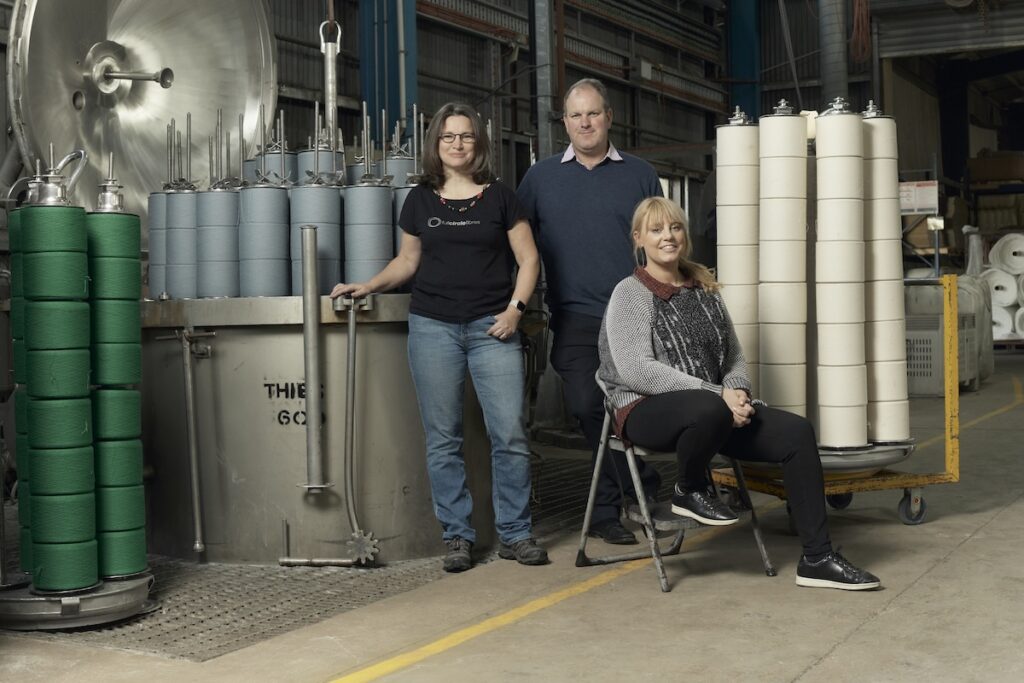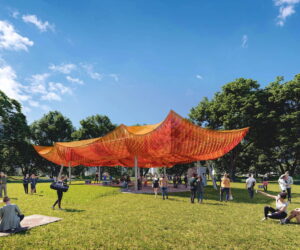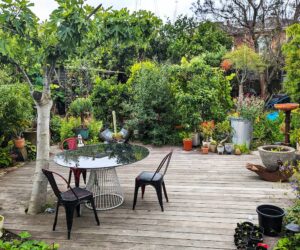In a significant step for Australian textile manufacturing, the Mud to Marle project — funded by a $147,000 grant from the Country Road Climate Fund — has successfully trialled a fully domestic, low-impact process for transforming low-value Australian wool into high-value yarn and fabric, marking a promising new future for the fibre and the broader textile industry.
Led by social enterprise Full Circle Fibres, in collaboration with Deakin University’s Institute for Frontier Materials (IFM) and textile manufacturer Loomtex, the project challenged industry norms by rethinking how lower-grade wool fibres could be repurposed for fine yarn applications rather than being relegated to chunky knitwear or homewares.
Meriel Chamberlin, Full Circle Fibres owner and founder, explains that about 3–5% of a Merino fleece consists of shorter fibres known as ‘locks’.
“These shorter fibres are perceived as having a lower value than the rest of the fleece and tend to be used in homewares or for chunkier knit garments as it is difficult to process them into fine yarn. In our project, we sourced locks from South Australia and blended the fibres with cotton from Queensland. The wool cotton blend yarn we’ve created is finer than yarn normally made with locks.”
Despite producing world-renowned wool, Australia lacks the infrastructure to process raw fibre on a commercial scale. The Mud to Marle project sought to prove the viability of end-to-end onshore production, conducting innovative trials at various locations including Deakin University’s Future Fibres Facility at IFM — one of the only Australian facilities capable of processing and spinning short staple fibre, like the wool locks used in this project.
“Deakin University is at the forefront of cotton processing and spinning innovation in Australia and has an array of textile processing equipment,” Associate Professor Christopher Hurren explains.
“Through the project we wanted to explore methods that reduce resource use while still delivering a viable, high-quality textile product. One of the ways we did this was by dyeing only the wool fibres within the wool-cotton blend, reducing water and energy consumption in this process.”
“The project shows the potential to produce garments in Australia with Australian fibres.”
The project has also unlocked an additional $300,000 for a three-year industry partnership to continue Deakin’s research into wool-cotton product.
“The commercial spinning capacity in Australia is incredibly limited, which presents a significant barrier to scaling production,” says Chamberlin. “But the learnings from this project have helped demonstrate demand and investment potential. There is growing momentum to revive Australia’s textile manufacturing capabilities.”
With samples of the Mud to Marle wool-cotton blend now tested in prototype garments — including T-shirts, jumpers, pants and skirts — the project has set the stage for further innovation in circular Australian textile production.
“This is just the beginning,” says Chamberlin. “The Mud to Marle project has proven that there is a future for fully domestic, low-impact textile manufacturing in Australia. Now, we need to focus on scaling these innovations and ensuring their long-term commercial viability.”



